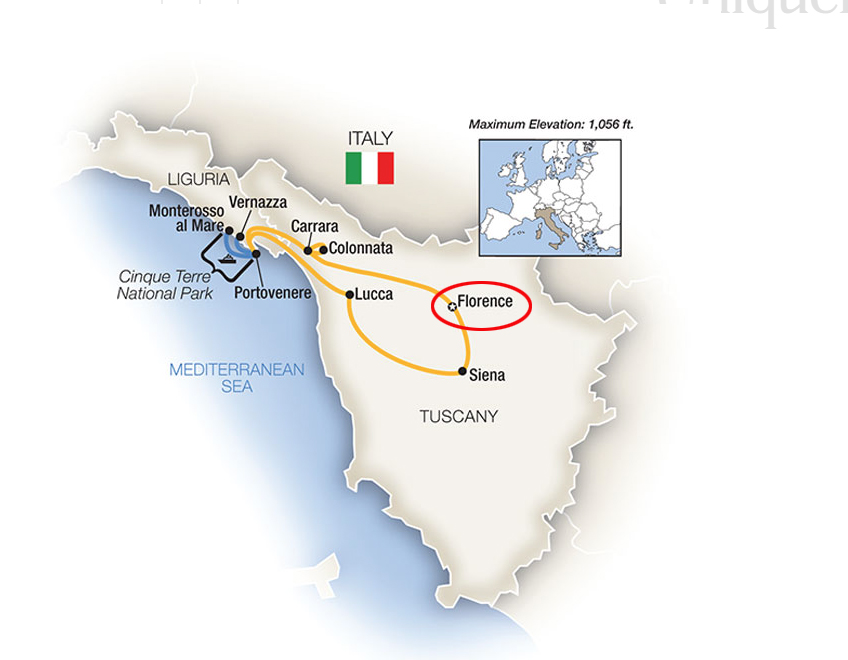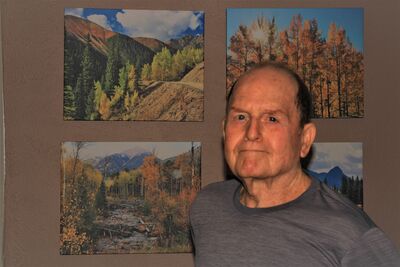Italy: Florence - Views From Our Hotel
Jul 17, 2023 15:16:17 #
We arrived in Florence, the starting point for a 7-day tour of Tuscany, late in the evening of May 17, 2023 after an 11-hour flight to Munich, a 3-hour layover and a short flight on a local airline. Thankfully, our luggage made it with us. Here is a much-abbreviated historical narrative:
Florence (/ˈflɒrəns/ FLORR-ənss; Italian: Firenze [fiˈrɛntse] is a city in Central Italy and the capital city of the Tuscany region. It is the most populated city in Tuscany, with 360,930 inhabitants in 2023, and 984,991 in its metropolitan area.
Florence was a centre of medieval European trade and finance and one of the wealthiest cities of that era. It is considered by many academics to have been the birthplace of the Renaissance, becoming a major artistic, cultural, commercial, political, economic and financial center. During this time, Florence rose to a position of enormous influence in Italy, Europe, and beyond. Its turbulent political history includes periods of rule by the powerful Medici family and numerous religious and republican revolutions. From 1865 to 1871 the city served as the capital of the Kingdom of Italy. The Florentine dialect forms the base of Standard Italian and it became the language of culture throughout Italy due to the prestige of the masterpieces by Dante Alighieri, Petrarch, Giovanni Boccaccio, Niccolò Machiavelli and Francesco Guicciardini.
The city attracts millions of tourists each year, and UNESCO declared the Historic Centre of Florence a World Heritage Site in 1982. The city is noted for its culture, Renaissance art and architecture and monuments. The city also contains numerous museums and art galleries, such as the Uffizi Gallery and the Palazzo Pitti, and still exerts an influence in the fields of art, culture and politics. Due to Florence's artistic and architectural heritage, Forbes ranked it as the most beautiful city in the world in 2010.
Florence plays an important role in Italian fashion, and is ranked in the top 15 fashion capitals of the world by Global Language Monitor; furthermore, it is a major national economic centre, as well as a tourist and industrial hub.
History (Much abbreviated)
Florence originated as a Roman city, and later, after a long period as a flourishing trading and banking medieval commune, it was the birthplace of the Italian Renaissance. It was politically, economically, and culturally one of the most important cities in Europe and the world from the 14th to 16th centuries.
The language spoken in the city during the 14th century came to be accepted as the model for what would become the Italian language. Thanks especially to the works of the Tuscans Dante, Petrarch and Boccaccio, the Florentine dialect, above all the local dialects, was adopted as the basis for a national literary language.
Starting from the late Middle Ages, Florentine money—in the form of the gold florin—financed the development of industry all over Europe, from Britain to Bruges, to Lyon and Hungary. Florentine bankers financed the English kings during the Hundred Years' War. They similarly financed the papacy, including the construction of their provisional capital of Avignon and, after their return to Rome, the reconstruction and Renaissance embellishment of Rome.
In the 15th century, Florence was among the largest cities in Europe, with a population of 60,000, and was considered rich and economically successful. Cosimo de' Medici was the first Medici family member to essentially control the city from behind the scenes. Although the city was technically a democracy of sorts, his power came from a vast patronage network along with his alliance to the new immigrants, the gente nuova (new people). The fact that the Medici were bankers to the pope also contributed to their ascendancy. Cosimo was succeeded by his son Piero, who was, soon after, succeeded by Cosimo's grandson, Lorenzo in 1469. Lorenzo was a great patron of the arts, commissioning works by Michelangelo, Leonardo da Vinci and Botticelli. Lorenzo was an accomplished poet and musician and brought composers and singers to Florence, including Alexander Agricola, Johannes Ghiselin, and Heinrich Isaac. By contemporary Florentines (and since), he was known as "Lorenzo the Magnificent" (Lorenzo il Magnifico).
Following Lorenzo de' Medici's death in 1492, he was succeeded by his son Piero II. When the French king Charles VIII invaded northern Italy, Piero II chose to resist his army. But when he realised the size of the French army at the gates of Pisa, he had to accept the humiliating conditions of the French king. These made the Florentines rebel, and they expelled Piero II. With his exile in 1494, the first period of Medici rule ended with the restoration of a republican government.
Another Florentine of this period was Niccolò Machiavelli, whose prescriptions for Florence's regeneration under strong leadership have often been seen as a legitimization of political expediency and even malpractice. Machiavelli was a political thinker, renowned for his political handbook The Prince, which is about ruling and exercising power. Commissioned by the Medici, Machiavelli also wrote the Florentine Histories, the history of the city.
In 1512, the Medici retook control of Florence with the help of Spanish and Papal troops. They were led by two cousins, Giovanni and Giulio de' Medici, both of whom would later become Popes of the Catholic Church, (Leo X and Clement VII, respectively). Both were generous patrons of the arts, commissioning works like Michelangelo's Laurentian Library and Medici Chapel in Florence, to name just two. Their reigns coincided with political upheaval in Italy, and thus in 1527, Florentines drove out the Medici for a second time and re-established a theocratic republic on 16 May 1527, (Jesus Christ was named King of Florence). The Medici returned to power in Florence in 1530, with the armies of Holy Roman Emperor Charles V and the blessings of Pope Clement VII (Giulio de' Medici).
Florence officially became a monarchy in 1531, when Emperor Charles and Pope Clement named Alessandro de Medici as Duke of the Florentine Republic. The Medici's monarchy would last over two centuries. Alessandro's successor, Cosimo I de Medici, was named Grand Duke of Tuscany in 1569; in all Tuscany, only the Republic of Lucca (later a Duchy) and the Principality of Piombino were independent from Florence.
Florence was home to the Medici, one of European history's most important noble families. Lorenzo de' Medici was considered a political and cultural mastermind of Italy in the late 15th century. Two members of the family were popes in the early 16th century: Leo X and Clement VII. Catherine de Medici married King Henry II of France and, after his death in 1559, reigned as regent in France. Marie de' Medici married Henry IV of France and gave birth to the future King Louis XIII. The Medici reigned as Grand Dukes of Tuscany, starting with Cosimo I de' Medici in 1569 and ending with the death of Gian Gastone de' Medici in 1737.
The Kingdom of Italy, which was established in 1861, moved its capital from Turin to Florence in 1865, although the capital was moved to Rome in 1871.
During World War II the city experienced a year-long German occupation (1943–1944) being part of the Italian Social Republic. Hitler declared it an open city on 3 July 1944 as troops of the British 8th Army closed in. In early August, the retreating Germans decided to demolish all the bridges along the Arno linking the district of Oltrarno to the rest of the city, making it difficult for troops of the 8th Army to cross. However, at the last moment Charles Steinhauslin, at the time consul of 26 countries in Florence, convinced the German general in Italy that the Ponte Vecchio was not to be destroyed due to its historical value.[citation needed] Instead, an equally historic area of streets directly to the south of the bridge, including part of the Corridoio Vasariano, was destroyed using mines. Since then the bridges have been restored to their original forms using as many of the remaining materials as possible, but the buildings surrounding the Ponte Vecchio have been rebuilt in a style combining the old with modern design. Shortly before leaving Florence, as they knew that they would soon have to retreat, the Germans executed many freedom fighters and political opponents publicly, in streets and squares including the Piazza Santo Spirito.
Tourism is, by far, the most important of all industries and most of the Florentine economy relies on the money generated by international arrivals and students studying in the city. The value tourism to the city totalled some €2.5 billion in 2015 and the number of visitors had increased by 5.5% from the previous year.
In 2013, Florence was listed as the second best world city by Condé Nast Traveler.
Manufacturing and commerce, however, still remain highly important. Florence is also Italy's 17th richest city in terms of average workers' earnings, with the figure being €23,265 (the overall city's income is €6,531,204,473), coming after Mantua, yet surpassing Bolzano.
https://en.wikipedia.org/wiki/Florence
I hope you enjoy this first of many sets from our recent trip to Italy.
Mark
Florence (/ˈflɒrəns/ FLORR-ənss; Italian: Firenze [fiˈrɛntse] is a city in Central Italy and the capital city of the Tuscany region. It is the most populated city in Tuscany, with 360,930 inhabitants in 2023, and 984,991 in its metropolitan area.
Florence was a centre of medieval European trade and finance and one of the wealthiest cities of that era. It is considered by many academics to have been the birthplace of the Renaissance, becoming a major artistic, cultural, commercial, political, economic and financial center. During this time, Florence rose to a position of enormous influence in Italy, Europe, and beyond. Its turbulent political history includes periods of rule by the powerful Medici family and numerous religious and republican revolutions. From 1865 to 1871 the city served as the capital of the Kingdom of Italy. The Florentine dialect forms the base of Standard Italian and it became the language of culture throughout Italy due to the prestige of the masterpieces by Dante Alighieri, Petrarch, Giovanni Boccaccio, Niccolò Machiavelli and Francesco Guicciardini.
The city attracts millions of tourists each year, and UNESCO declared the Historic Centre of Florence a World Heritage Site in 1982. The city is noted for its culture, Renaissance art and architecture and monuments. The city also contains numerous museums and art galleries, such as the Uffizi Gallery and the Palazzo Pitti, and still exerts an influence in the fields of art, culture and politics. Due to Florence's artistic and architectural heritage, Forbes ranked it as the most beautiful city in the world in 2010.
Florence plays an important role in Italian fashion, and is ranked in the top 15 fashion capitals of the world by Global Language Monitor; furthermore, it is a major national economic centre, as well as a tourist and industrial hub.
History (Much abbreviated)
Florence originated as a Roman city, and later, after a long period as a flourishing trading and banking medieval commune, it was the birthplace of the Italian Renaissance. It was politically, economically, and culturally one of the most important cities in Europe and the world from the 14th to 16th centuries.
The language spoken in the city during the 14th century came to be accepted as the model for what would become the Italian language. Thanks especially to the works of the Tuscans Dante, Petrarch and Boccaccio, the Florentine dialect, above all the local dialects, was adopted as the basis for a national literary language.
Starting from the late Middle Ages, Florentine money—in the form of the gold florin—financed the development of industry all over Europe, from Britain to Bruges, to Lyon and Hungary. Florentine bankers financed the English kings during the Hundred Years' War. They similarly financed the papacy, including the construction of their provisional capital of Avignon and, after their return to Rome, the reconstruction and Renaissance embellishment of Rome.
In the 15th century, Florence was among the largest cities in Europe, with a population of 60,000, and was considered rich and economically successful. Cosimo de' Medici was the first Medici family member to essentially control the city from behind the scenes. Although the city was technically a democracy of sorts, his power came from a vast patronage network along with his alliance to the new immigrants, the gente nuova (new people). The fact that the Medici were bankers to the pope also contributed to their ascendancy. Cosimo was succeeded by his son Piero, who was, soon after, succeeded by Cosimo's grandson, Lorenzo in 1469. Lorenzo was a great patron of the arts, commissioning works by Michelangelo, Leonardo da Vinci and Botticelli. Lorenzo was an accomplished poet and musician and brought composers and singers to Florence, including Alexander Agricola, Johannes Ghiselin, and Heinrich Isaac. By contemporary Florentines (and since), he was known as "Lorenzo the Magnificent" (Lorenzo il Magnifico).
Following Lorenzo de' Medici's death in 1492, he was succeeded by his son Piero II. When the French king Charles VIII invaded northern Italy, Piero II chose to resist his army. But when he realised the size of the French army at the gates of Pisa, he had to accept the humiliating conditions of the French king. These made the Florentines rebel, and they expelled Piero II. With his exile in 1494, the first period of Medici rule ended with the restoration of a republican government.
Another Florentine of this period was Niccolò Machiavelli, whose prescriptions for Florence's regeneration under strong leadership have often been seen as a legitimization of political expediency and even malpractice. Machiavelli was a political thinker, renowned for his political handbook The Prince, which is about ruling and exercising power. Commissioned by the Medici, Machiavelli also wrote the Florentine Histories, the history of the city.
In 1512, the Medici retook control of Florence with the help of Spanish and Papal troops. They were led by two cousins, Giovanni and Giulio de' Medici, both of whom would later become Popes of the Catholic Church, (Leo X and Clement VII, respectively). Both were generous patrons of the arts, commissioning works like Michelangelo's Laurentian Library and Medici Chapel in Florence, to name just two. Their reigns coincided with political upheaval in Italy, and thus in 1527, Florentines drove out the Medici for a second time and re-established a theocratic republic on 16 May 1527, (Jesus Christ was named King of Florence). The Medici returned to power in Florence in 1530, with the armies of Holy Roman Emperor Charles V and the blessings of Pope Clement VII (Giulio de' Medici).
Florence officially became a monarchy in 1531, when Emperor Charles and Pope Clement named Alessandro de Medici as Duke of the Florentine Republic. The Medici's monarchy would last over two centuries. Alessandro's successor, Cosimo I de Medici, was named Grand Duke of Tuscany in 1569; in all Tuscany, only the Republic of Lucca (later a Duchy) and the Principality of Piombino were independent from Florence.
Florence was home to the Medici, one of European history's most important noble families. Lorenzo de' Medici was considered a political and cultural mastermind of Italy in the late 15th century. Two members of the family were popes in the early 16th century: Leo X and Clement VII. Catherine de Medici married King Henry II of France and, after his death in 1559, reigned as regent in France. Marie de' Medici married Henry IV of France and gave birth to the future King Louis XIII. The Medici reigned as Grand Dukes of Tuscany, starting with Cosimo I de' Medici in 1569 and ending with the death of Gian Gastone de' Medici in 1737.
The Kingdom of Italy, which was established in 1861, moved its capital from Turin to Florence in 1865, although the capital was moved to Rome in 1871.
During World War II the city experienced a year-long German occupation (1943–1944) being part of the Italian Social Republic. Hitler declared it an open city on 3 July 1944 as troops of the British 8th Army closed in. In early August, the retreating Germans decided to demolish all the bridges along the Arno linking the district of Oltrarno to the rest of the city, making it difficult for troops of the 8th Army to cross. However, at the last moment Charles Steinhauslin, at the time consul of 26 countries in Florence, convinced the German general in Italy that the Ponte Vecchio was not to be destroyed due to its historical value.[citation needed] Instead, an equally historic area of streets directly to the south of the bridge, including part of the Corridoio Vasariano, was destroyed using mines. Since then the bridges have been restored to their original forms using as many of the remaining materials as possible, but the buildings surrounding the Ponte Vecchio have been rebuilt in a style combining the old with modern design. Shortly before leaving Florence, as they knew that they would soon have to retreat, the Germans executed many freedom fighters and political opponents publicly, in streets and squares including the Piazza Santo Spirito.
Tourism is, by far, the most important of all industries and most of the Florentine economy relies on the money generated by international arrivals and students studying in the city. The value tourism to the city totalled some €2.5 billion in 2015 and the number of visitors had increased by 5.5% from the previous year.
In 2013, Florence was listed as the second best world city by Condé Nast Traveler.
Manufacturing and commerce, however, still remain highly important. Florence is also Italy's 17th richest city in terms of average workers' earnings, with the figure being €23,265 (the overall city's income is €6,531,204,473), coming after Mantua, yet surpassing Bolzano.
https://en.wikipedia.org/wiki/Florence
I hope you enjoy this first of many sets from our recent trip to Italy.
Mark
Gail on the roof-top restaurant of our hotel, The Lucchesi Plaza
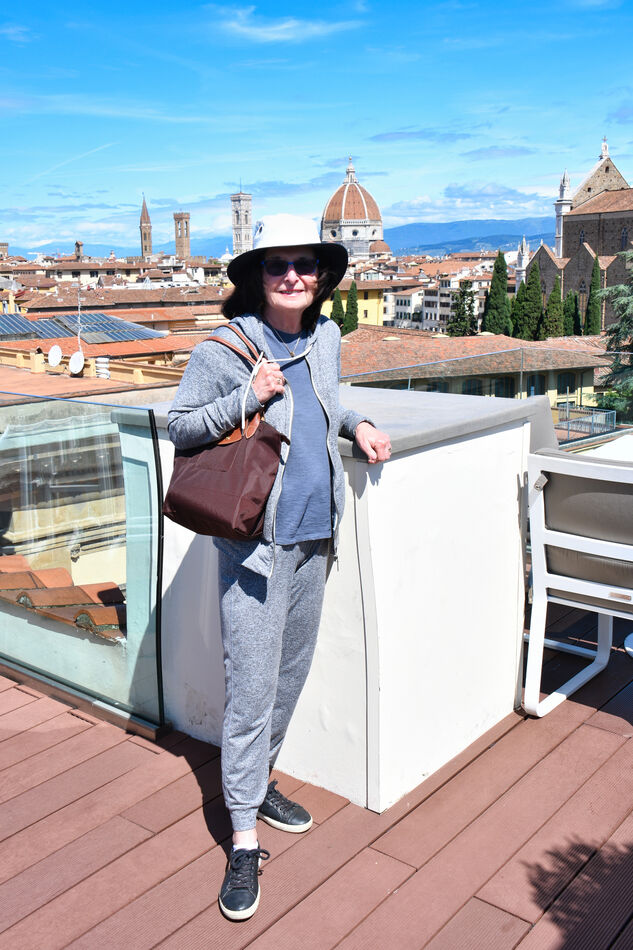
(Download)
View of The Arno River with Michaelangelo Hill in the background
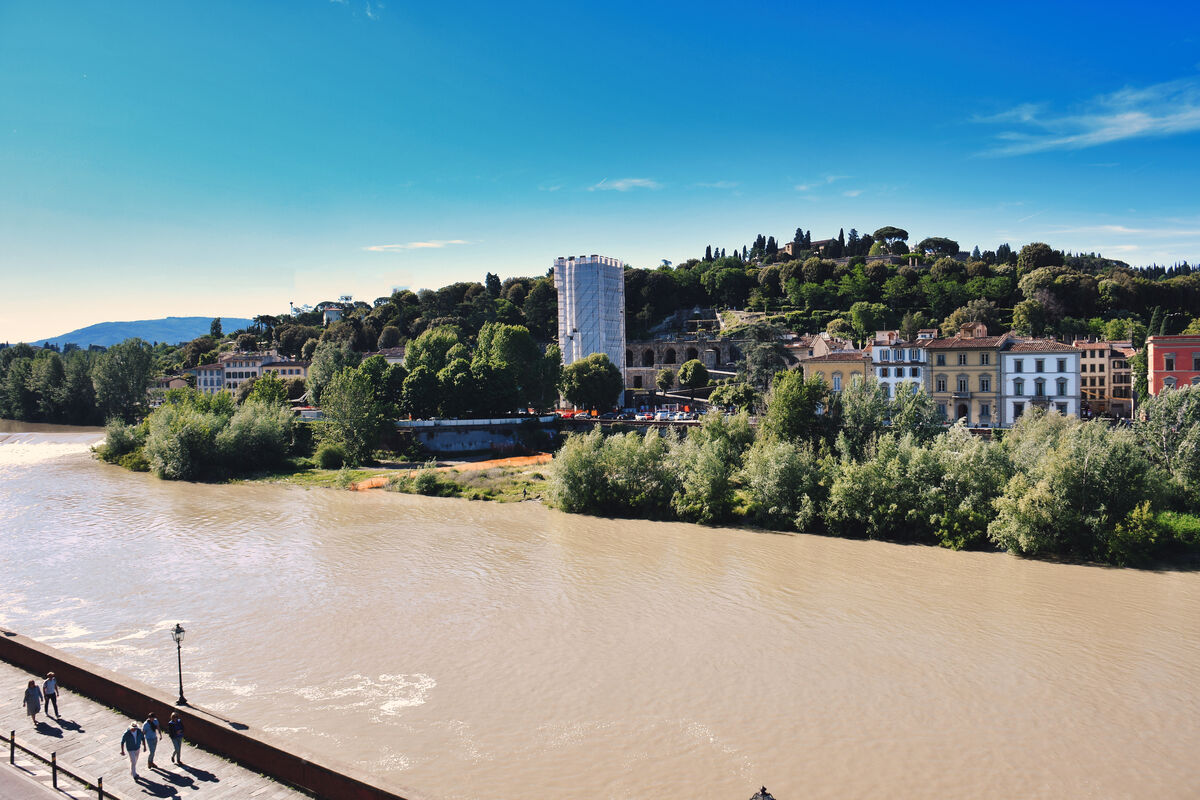
(Download)
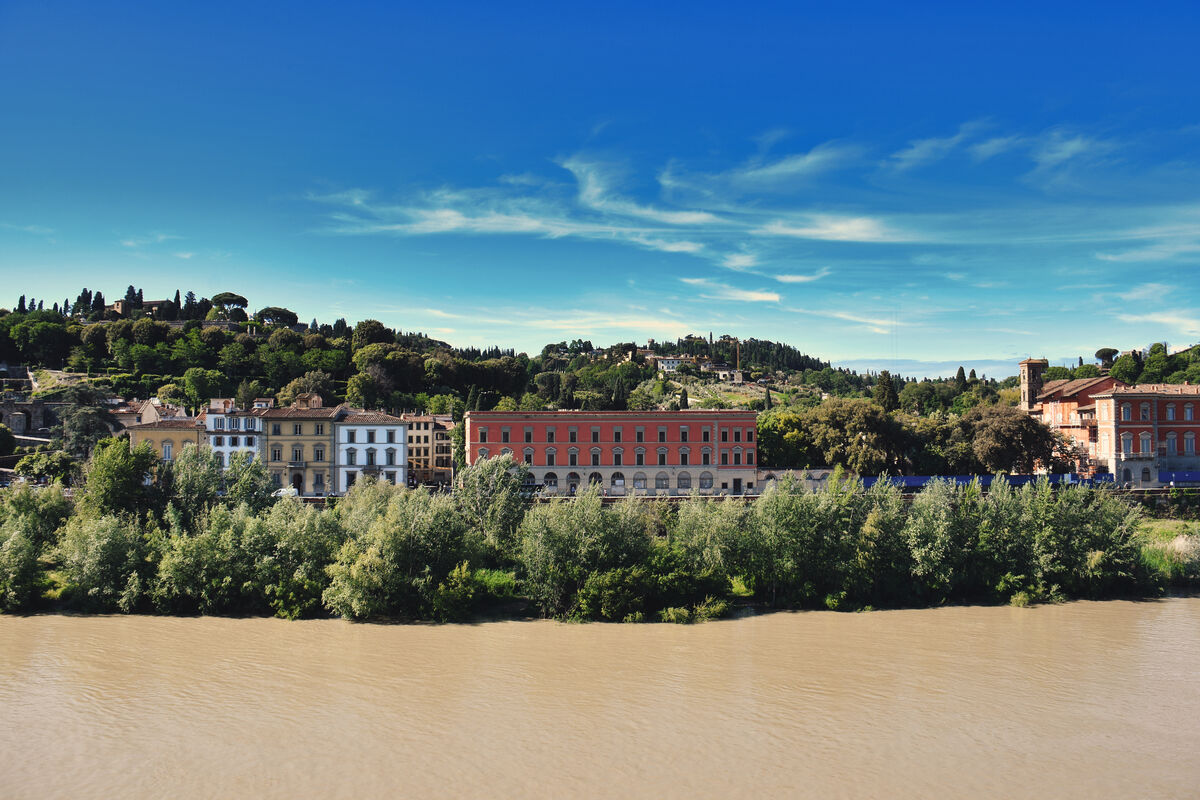
(Download)
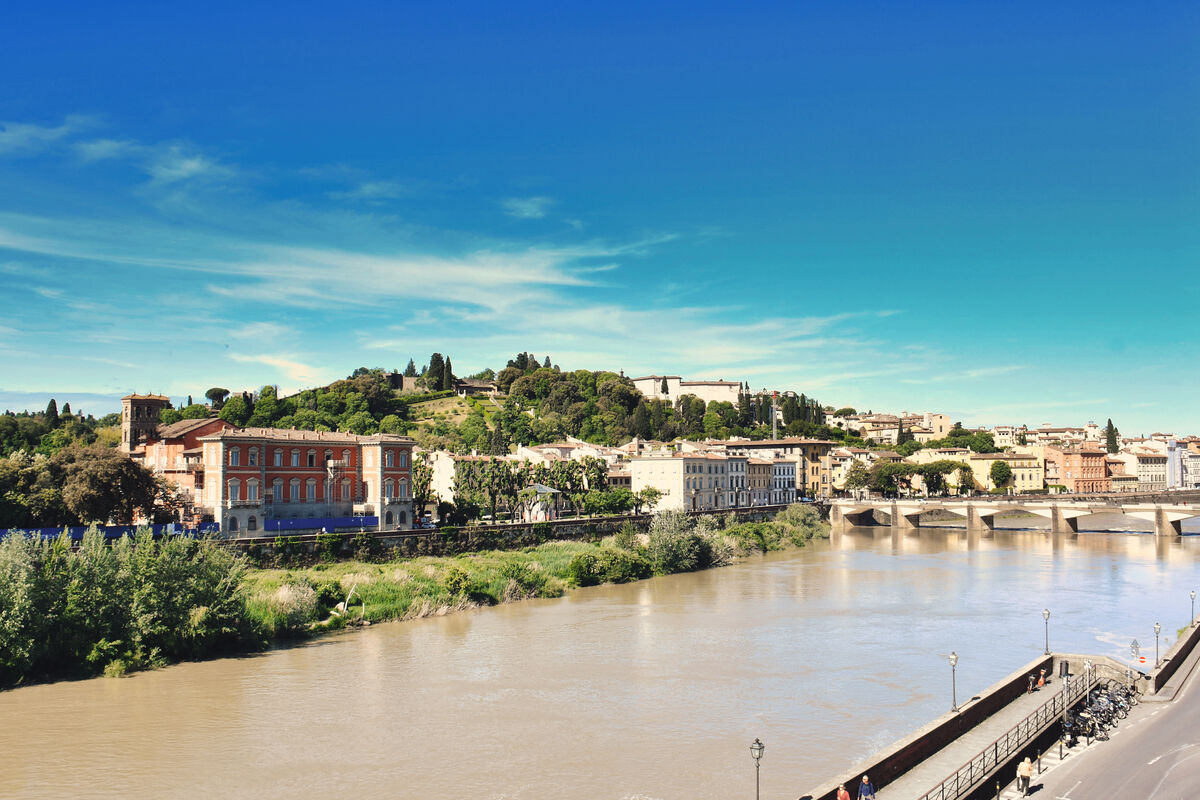
(Download)
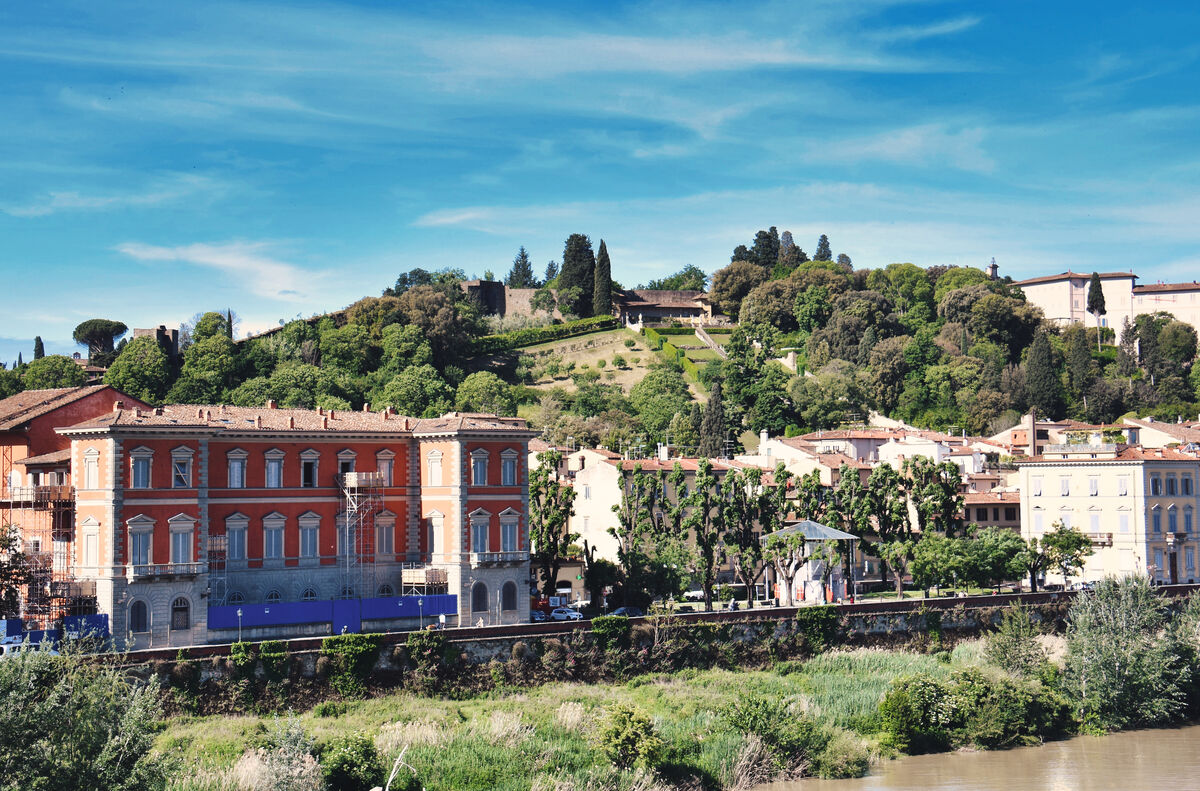
(Download)
Looking East
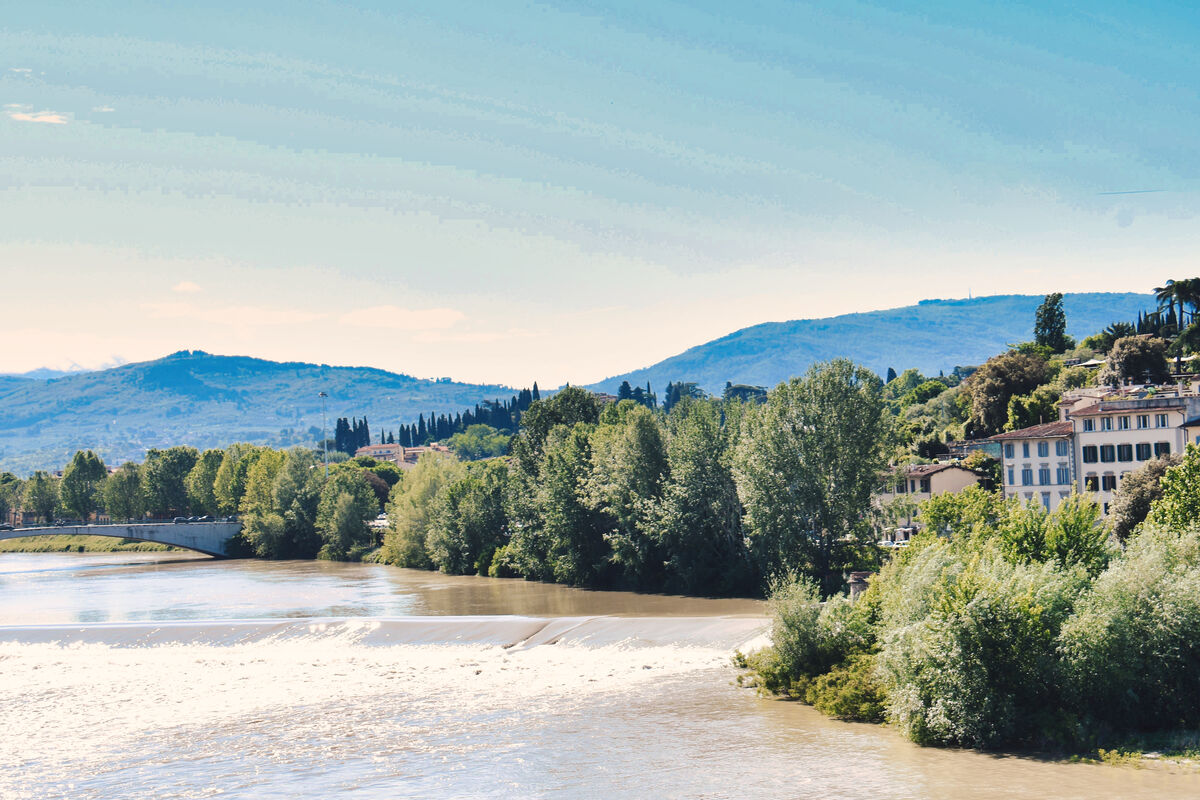
(Download)
Ancient Roman ruins at the base of Piazzale Michaelangelo
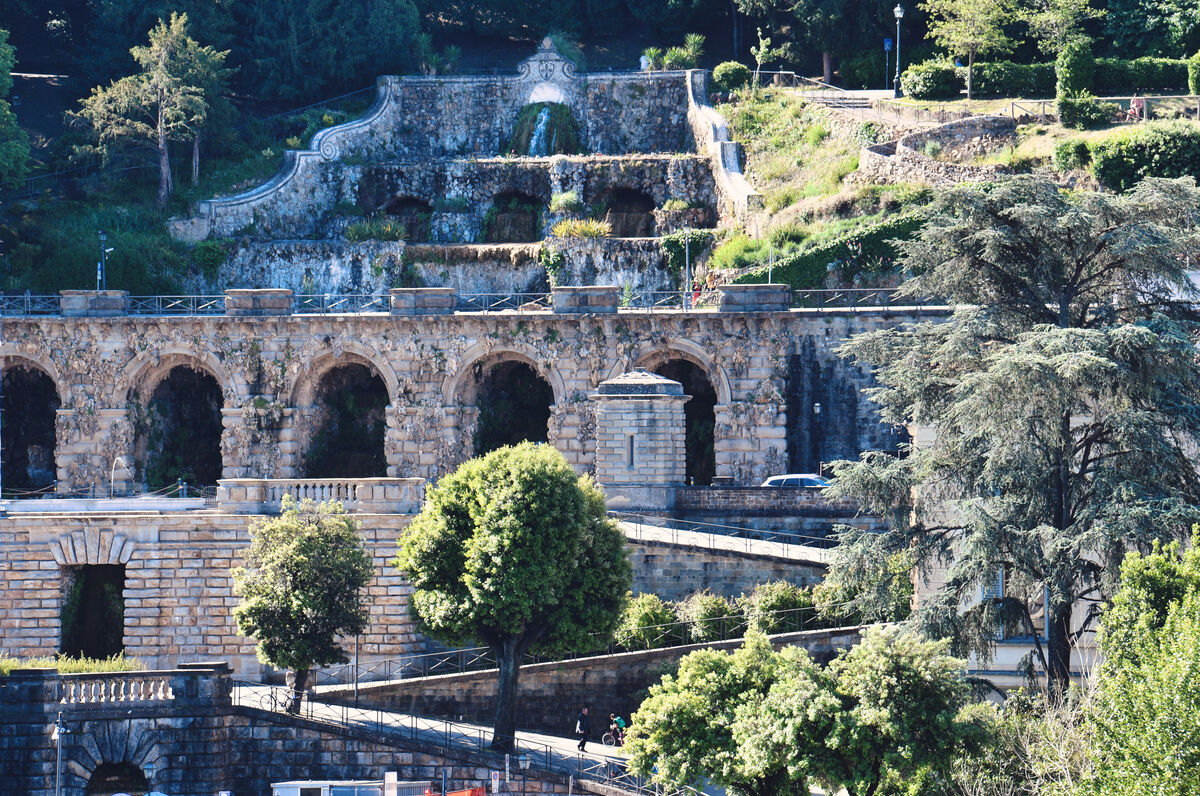
(Download)
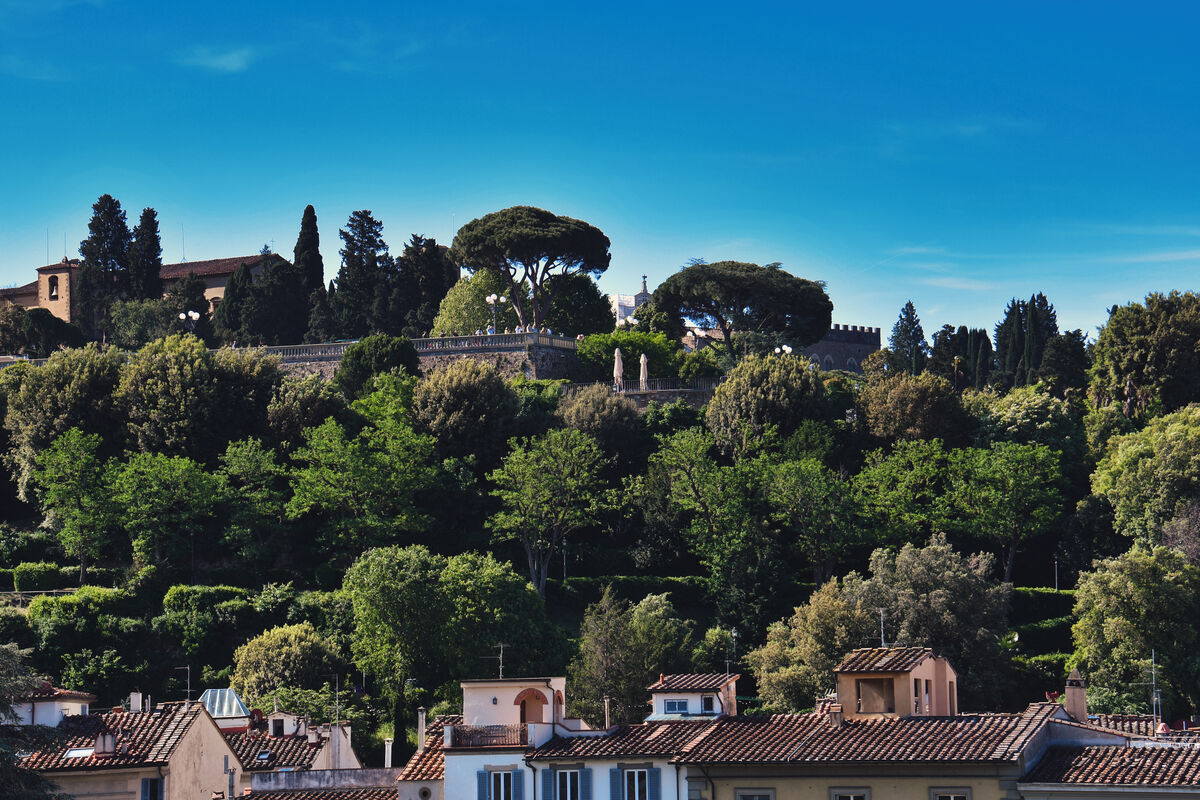
(Download)
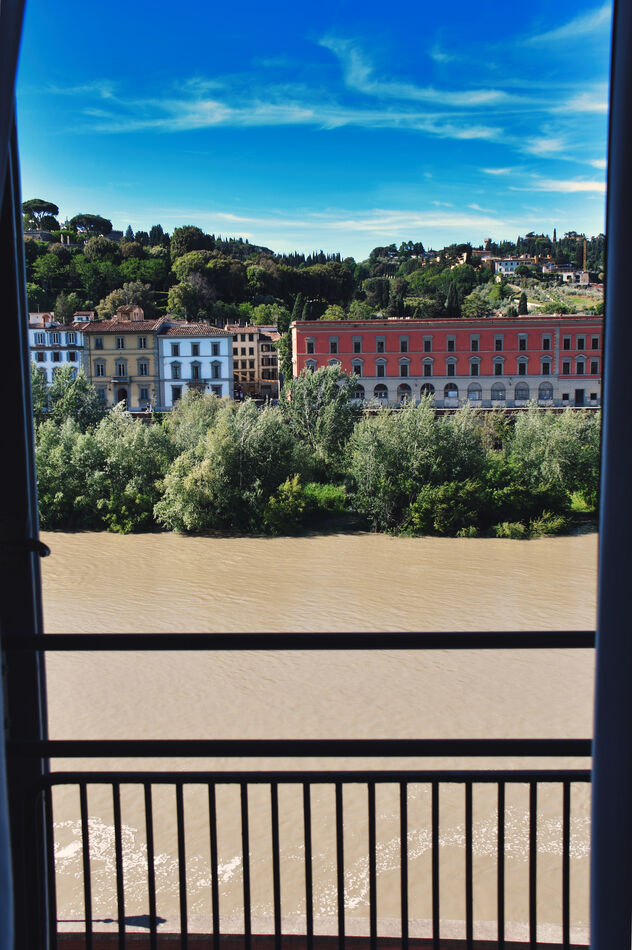
(Download)
View of the South (left) bank of the Arno
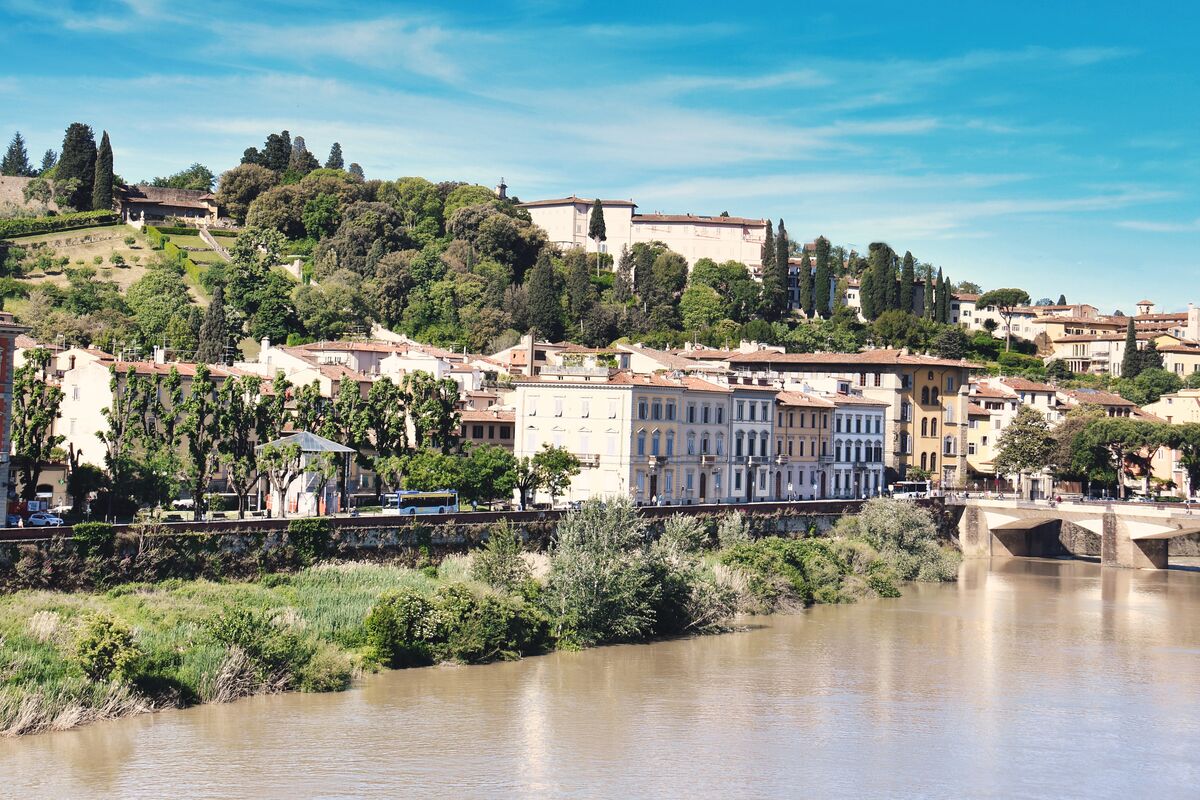
(Download)
Jul 17, 2023 15:17:04 #
Jul 17, 2023 15:36:20 #
srfmhg wrote:
We arrived in Florence, the starting point for a 7... (show quote)
Gorgeous, like stepping back in time
👑👑👑👑👑
Jul 17, 2023 15:38:46 #
Jul 17, 2023 15:48:48 #
Jul 17, 2023 15:54:33 #
Jul 17, 2023 16:10:22 #
Jul 17, 2023 16:29:25 #
Jul 17, 2023 17:39:23 #
Jul 17, 2023 17:44:39 #
joecichjr wrote:
Gorgeous, like stepping back in time
👑👑👑👑👑
👑👑👑👑👑
Thank you very much Joe.
Jul 17, 2023 17:45:07 #
Jul 17, 2023 17:45:31 #
Jul 17, 2023 17:47:42 #
cliff Hilbert wrote:
Interesting pictures, but why is the river so dirty?
Thanks very much Cliff. They were experiencing very heavy rains the week before with severe flooding in several parts of the country. The brown color is mud and silt from the hills.
Jul 17, 2023 17:48:46 #
NMGal wrote:
Beautiful. So far, no skyscrapers.
Thanks very much Barbara. The only skyscrapers we saw were the ancient towers!
Jul 17, 2023 17:49:24 #
If you want to reply, then register here. Registration is free and your account is created instantly, so you can post right away.

